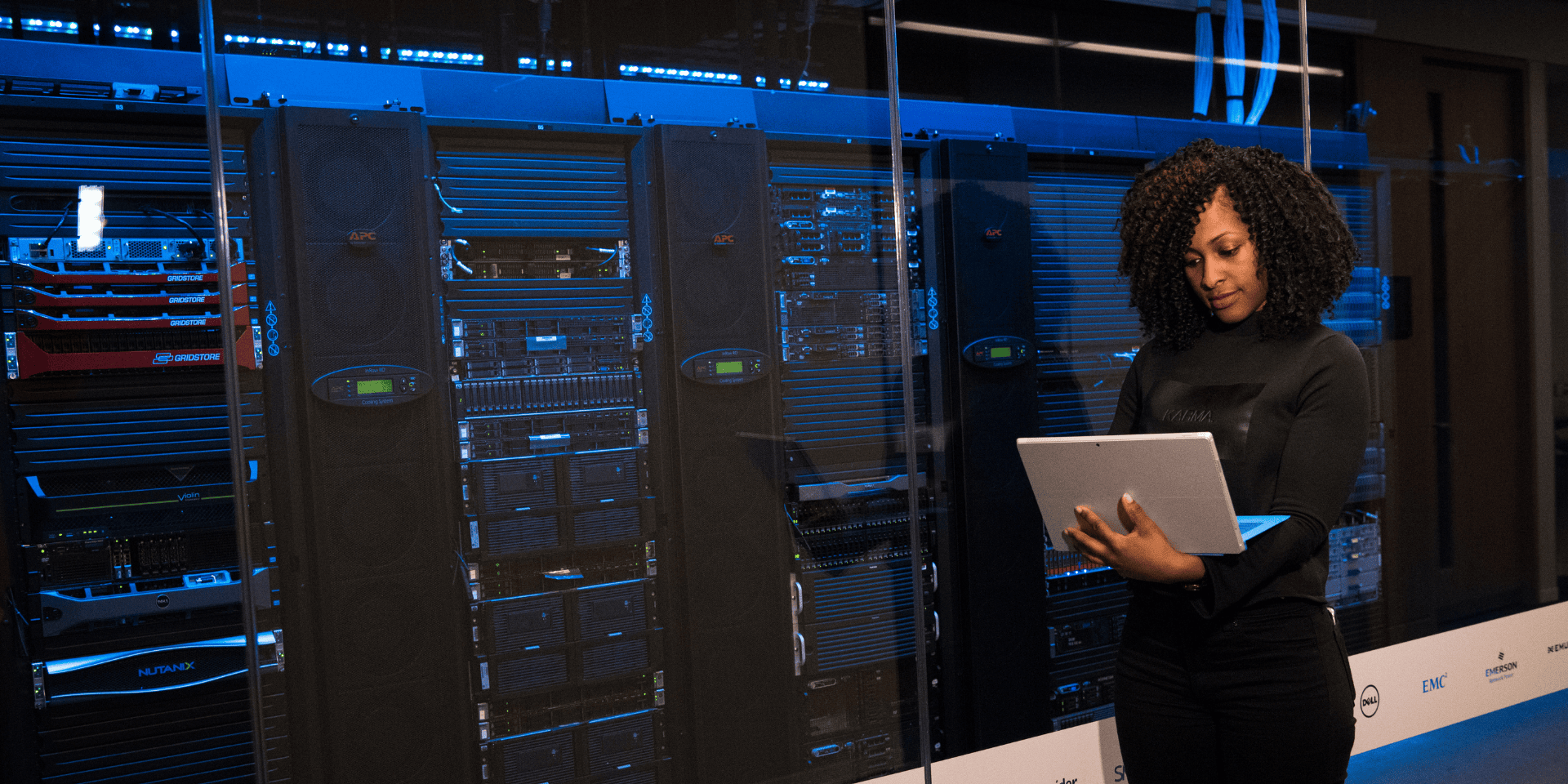Cybersecurity is one of the most in-demand fields in tech today, but there’s a pressing concern: the gender diversity gap. Women remain underrepresented, making up only 17.9% of the cybersecurity workforce in the UK. Yet, tech companies are increasingly recognising the unique value women bring to cybersecurity. So, why is the demand for skilled female professionals in this industry growing, and what does it mean for women aspiring to break into this field?
The growing demand for cybersecurity talent
In recent years, the cybersecurity industry has experienced explosive growth. It’s now the fastest-growing IT role in the UK. With the rise in cyber threats and the growing reliance on digital infrastructures, businesses across industries are scrambling to secure their networks and data. However, as the demand for skilled cybersecurity professionals rises, the gap between available talent and job openings is widening.
In fact, according to Socura, cybersecurity vacancies have increased by 60% since 2021, but the number of women entering the field has dramatically decreased. This is concerning for the future of cybersecurity as diverse teams are proven to be more innovative and better at problem-solving.
The expanding threat landscape
With the rise in cybercrime, including data breaches and ransomware attacks, the cybersecurity industry is now more crucial than ever. For instance, according to a 2023 report by Cybersecurity Ventures, global cybercrime costs are predicted to exceed $10 trillion by 2025. This growing threat is fueling the demand for cybersecurity experts, yet the shortage of skilled professionals remains a significant issue. In the UK alone, businesses are struggling to fill cybersecurity roles due to a lack of qualified candidates, especially women.
Gender diversity in cybersecurity: a wake-up call
Despite the increase in job openings, women still make up a very small percentage of the cybersecurity workforce in the UK. As mentioned, only about 17% to 17.9% of cybersecurity workers are women. This figure is even lower when considering leadership roles and technical positions.
This gender gap is not just an issue of fairness, it’s also a missed opportunity for the industry. Diverse teams are crucial for tackling cybersecurity challenges from multiple perspectives, ultimately leading to stronger and more effective solutions. So, how can we address this imbalance and encourage more women to join the cybersecurity workforce?
Why women are underrepresented in cybersecurity
The cybersecurity industry has long been dominated by men, and a variety of factors contribute to the low number of women in the field. From early gender biases in education to the lack of female role models in technical positions, these barriers make it harder for women to enter and thrive in cybersecurity roles. Additionally, the industry’s association with technical expertise can discourage women, who may not feel encouraged to pursue STEM careers at the same rates as their male counterparts.
Research has shown that companies with more women in leadership roles see better financial performance. The same could be true for cybersecurity teams; diverse perspectives can lead to innovative solutions and a more holistic approach to identifying and mitigating cyber threats.

Why women are the missing piece in cybersecurity
The cybersecurity landscape is complex, requiring innovative thinking, strategic problem-solving, and the ability to anticipate threats before they happen. Women bring a unique set of skills and perspectives to the table that can help bridge the gap in cybersecurity talent. Let’s take a look at some of the reasons why women are essential in this field:
Diverse perspectives drive innovation
Cybersecurity isn’t just about identifying threats; it’s about creating strategies that prevent future attacks. By diversifying the talent pool, companies benefit from different problem-solving approaches. Women often excel in areas such as collaboration, communication, and creativity, all of which are crucial for developing cutting-edge cybersecurity solutions.
Closing the communication gap
Women are often praised for their ability to communicate clearly and empathise with others. In cybersecurity, the ability to explain complex technical issues in simple terms is critical, especially when collaborating with non-technical teams. Women can help bridge the gap between technical jargon and user-friendly language, making it easier for companies to implement security measures and respond to incidents.
Tackling the talent shortage
The cybersecurity skills shortage is one of the biggest challenges facing the tech industry. By actively seeking and empowering women to pursue careers in cybersecurity, companies can address this talent shortage while promoting diversity and inclusion. Encouraging women to take on cybersecurity roles helps to create a more sustainable workforce.
Initiatives to boost gender diversity in cybersecurity
The good news is that numerous initiatives are underway to encourage more women to enter the field of cybersecurity. These programmes aim to provide mentorship, training, and networking opportunities for women to build careers in this high-demand sector.
Cybersecurity education and mentorship programmes
Many organisations are offering scholarships, boot camps, and mentorship programmes specifically for women interested in cybersecurity. These programmes provide the skills and resources needed to break into the industry, even for those with no prior technical background.
Examples include:
- Women in Cybersecurity (WiCyS): A global organisation dedicated to bringing women together in the cybersecurity field for networking, education, and mentorship.
- Girls Who Code: A non-profit initiative aimed at closing the gender gap in technology by providing opportunities for young women to learn coding and cybersecurity skills.
- CyberFirst by the NCSC: A UK government initiative offering scholarships, training, and career opportunities for women in cybersecurity.
Corporate initiatives and gender-inclusive hiring practices
Tech companies are also recognising the importance of diversity and are increasingly focused on gender-inclusive hiring practices. This includes creating policies that ensure equal opportunities for women and fostering inclusive work environments that support women’s professional growth. For instance, companies like Microsoft, IBM, and Cisco have committed to increasing the number of women in cybersecurity roles by offering flexible working conditions, leadership training, and clear career progression pathways.
Breaking down barriers and encouraging more women to enter cybersecurity
To truly tackle the gender diversity issue in cybersecurity, it’s essential to break down the barriers that prevent women from pursuing careers in the field. Some of the key challenges women face include:
Imposter syndrome and lack of confidence
Many women in tech report feeling like impostors, even when they are highly skilled. This can be particularly pronounced in male-dominated fields like cybersecurity. Encouraging women to embrace their skills and build confidence is crucial for retaining women in the industry.
Access to networking and professional development
Networking is essential for career progression, but many women report feeling excluded from male-dominated spaces. It’s important for companies to create networking opportunities specifically for women, whether through women’s tech groups, conferences, or internal networks, to help foster a supportive community.

Career paths in cybersecurity for women
Cybersecurity is a broad field that offers a range of career paths. Women entering this industry don’t have to follow a one-size-fits-all route. They can specialise in areas such as:
Security Analyst: Responsible for identifying and mitigating security risks within an organisation’s network.
Penetration Tester (Ethical Hacker): These experts simulate cyberattacks to find vulnerabilities before malicious hackers can exploit them.
Incident Responder: Incident responders work to mitigate cyberattacks as they happen and recover data after a breach.
Security Consultant: Advising businesses on how to improve their cybersecurity systems and defend against threats.
Inspiring women leading the way in cybersecurity
Women like Parisa Tabriz, known as Google’s “Security Princess,” and Jaya Baloo, a leading cybersecurity expert and CISO at KPN, are breaking barriers and making major contributions to the field. Their success stories not only serve as a testament to what’s possible but also inspire young women to follow in their footsteps.
Another example is Dr. Anne-Marie Eklund Löwinder, who was the first woman in Sweden to become an expert in cryptography. She is currently working with organisations to develop secure systems to protect personal data.
Emerging technologies and cybersecurity trends
As technologies such as AI, machine learning, and blockchain continue to reshape the landscape of cybersecurity, women are increasingly being called upon to bring their expertise to these cutting-edge areas. AI and machine learning, in particular, are playing a major role in automating threat detection and response, while blockchain is transforming the way sensitive data is protected. Women working in these technologies are not just contributing to cybersecurity, they are driving the future of it.
A future powered by women in cybersecurity
As the demand for cybersecurity professionals continues to surge, tech companies are seeking women to bring fresh perspectives, tackle emerging threats, and bridge the gender gap in the industry. Women are poised to play a pivotal role in shaping the future of cybersecurity, but it’s up to businesses and initiatives to create the environment and opportunities for women to succeed.
By supporting women’s entry into cybersecurity through education, mentorship, and inclusive hiring practices, we can help build a diverse and resilient cybersecurity workforce for the future. For women looking to break into this exciting field, now is the time to get started.




